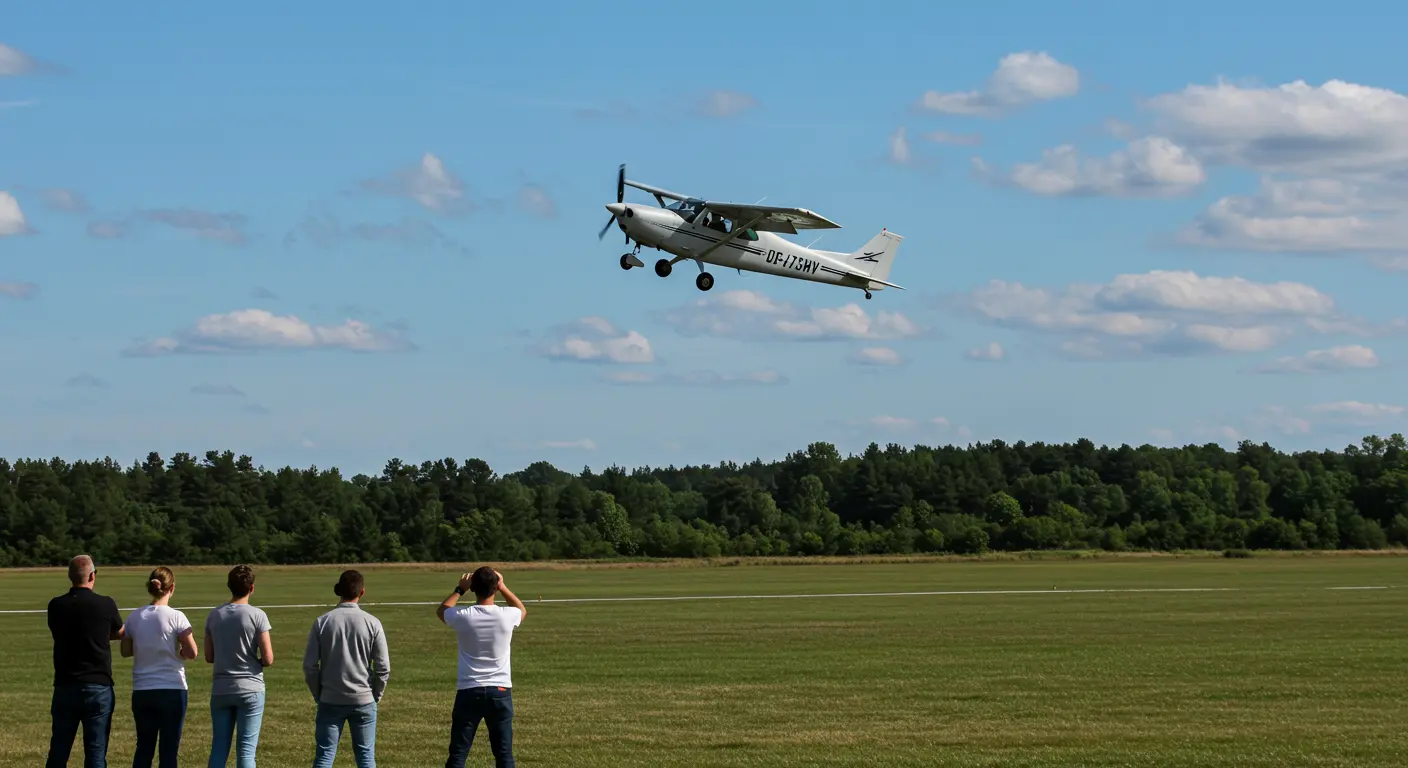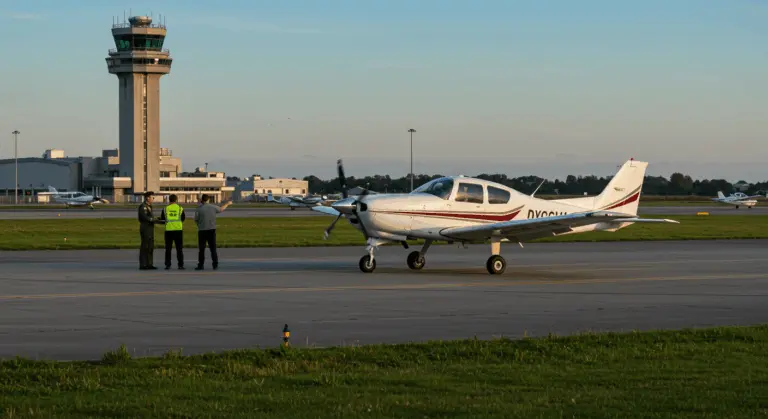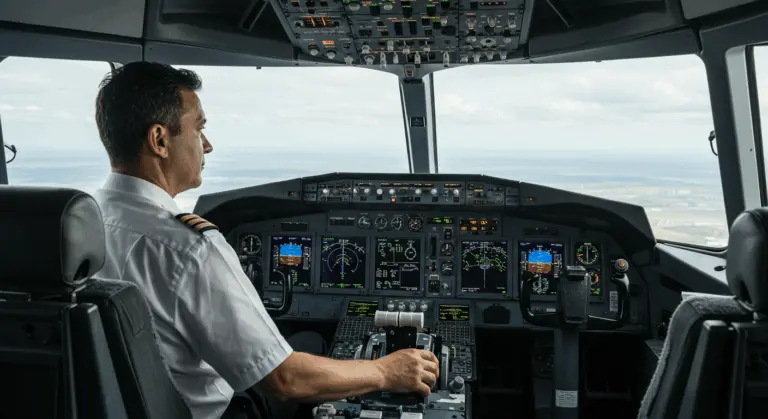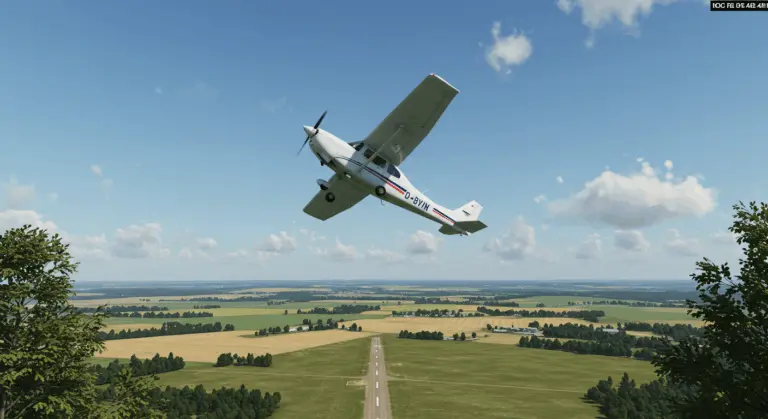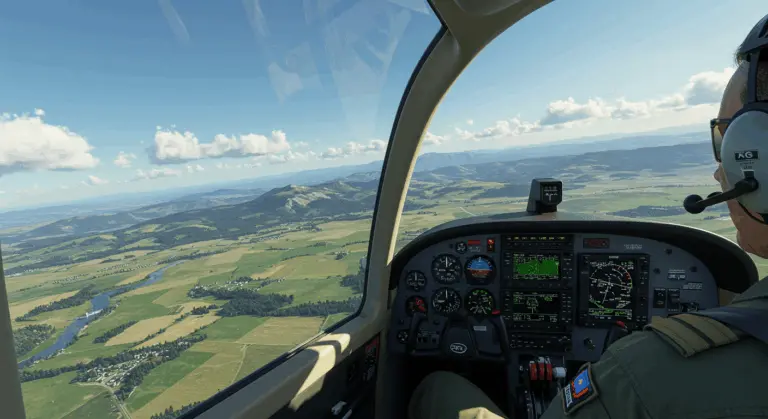Power-Off 180 Maneuver – A Comprehensive Guide
Understanding the Power-Off 180 Maneuver
The power-off 180 is one of aviation’s most critical maneuvers, simulating an emergency landing scenario with exceptional precision. It demands cutting engine power to idle at or below 1,000 feet AGL, then gliding to a preselected touchdown point. The primary objective? Developing precise aircraft control and energy management during an unpowered descent.
During execution, pilots must immediately pitch for best glide speed the moment power is reduced. This finds the optimal balance between distance covered and descent rate. This maneuver is valuable because it removes the safety net of power, forcing pilots to adapt to shifting conditions—particularly wind—using pure skill alone.
Consider this scenario: you’re flying your downwind leg when you notice high ground speed indicating a tailwind. Your response? Adjust by making your base turn toward the runway sooner than normal after pulling power back. This split-second decision-making forges the judgment essential for actual emergencies.
Key Components of the Power-Off 180 Approach
-
Simulated Engine Failure: The maneuver typically begins on the downwind leg, simulating an engine failure to create a realistic training scenario.
-
Glide Path Management: Without power, pilots must manage a steep glide path using techniques like S-turns or forward slips to control the descent rate and align with the runway.
-
Dynamic Assessment: Pilots must constantly evaluate their position relative to the touchdown point, making continuous adjustments to ensure they neither overshoot nor fall short.
Best Glide Speed – Maximizing Distance
Airspeed control is paramount in the power-off 180 maneuver. Best glide speed—usually around 65 KIAS for most trainers—represents the optimal speed that maximizes horizontal distance per unit of altitude sacrificed. This speed provides the most efficient energy conversion of potential energy (altitude) into forward distance.
Fly too fast? You’ll descend rapidly, potentially landing short of your intended point. Too slow? Glide efficiency plummets, and you risk an early stall. Moreover, as you approach the runway, precise speed control prevents floating or overshooting during the critical flare phase.
Pilots must drill establishing and holding best glide speed the instant power comes back, using pitch to lock in this speed throughout the approach. This skill becomes automatic with practice, allowing pilots to focus on other aspects of the maneuver while maintaining optimal glide performance.
Wind Correction Techniques
Wind conditions significantly affect the power-off 180 maneuver, requiring careful correction techniques. The crab technique is a primary method—the aircraft’s heading differs from its ground track, essentially flying sideways relative to the ground to counteract crosswind drift while maintaining the desired runway path.
Throughout the approach, pilots must carefully read wind conditions, continuously reading ground speed, drift patterns, and their aircraft’s relationship to the target touchdown zone. Headwinds steepen your glide path—land short if you’re not careful. Tailwinds flatten it out, threatening an overshoot.
As touchdown approaches in crosswind conditions, pilots must seamlessly transition from crab to wing-low technique. This involves lowering the upwind wing while using opposite rudder to maintain runway alignment. This requires full aileron deflection into the wind, preventing that upwind wing from lifting and sending you sideways.
Executing the Power-Off 180 Maneuver
The power-off 180 requires methodical preparation and exceptional precision. Start by positioning yourself on downwind at the standard altitude—typically 1,000 feet AGL. As you reach a position abeam your intended touchdown point, reduce the throttle to idle, simulating an engine failure. Immediately adjust pitch to maintain best glide speed and begin your descent planning.
Base turn timing? Absolutely critical. Wind direction and velocity become your primary decision factors. Headwind? Delay slightly. Tailwind? Turn early to compensate for that increased ground speed. Throughout the maneuver, continuously evaluate your position relative to the touchdown point, making adjustments as necessary.
Though it simulates an emergency, the power-off 180 is essentially an energy management exercise. Aviation writer John Pfeifer aptly notes it’s a commercial check ride maneuver designed precisely for this purpose—not strictly emergency simulation. Yet the skills it develops prove invaluable when real emergencies strike.
Common Errors in Power-Off 180 Landings
-
Unstabilized Approach: Failing to establish a consistent descent profile early makes the aircraft difficult to manage as it nears the ground.
-
Poor Speed Control: Flying too fast causes floating past the touchdown point, while flying too slow can result in landing short or an early stall.
-
Configuration and Flare Errors: Improper or delayed use of flaps alters glide performance, and poor flare technique often leads to hard landings or excessive floating.
Post-Landing Procedures and Safety Checks
After a successful touchdown, your work isn’t finished—proper post-landing procedures remain essential. Priority one: clear that active runway promptly. Apply appropriate braking as needed while maintaining directional control with the rudder pedals, especially in crosswind conditions where the aircraft may continue to experience weathering tendencies.
Runway cleared? Follow ground control’s taxi instructions to parking. During the taxi, complete the post-landing checklist, which includes retracting flaps, turning off non-essential electrical equipment, and setting the engine for ground cooling.
At your parking spot, execute thorough shutdown procedures and safety checks. Ensure all systems are properly secured, avionics are powered down, and the aircraft is appropriately configured for parking. These consistent routines ensure safety and develop the disciplined checklist mentality that defines professional aviators.
Conclusion – Mastering the Power-Off 180 Maneuver
Mastering the power-off 180 is more than checking a box on your training syllabus. It represents your development of advanced energy management, building both confidence and skill to handle potential engine failures through precise glide path control. The techniques you develop—airspeed mastery, wind correction, energy management—become fundamental pillars of airman ship, directly transferable when real emergencies demand your best.

